‘Tis the season for holiday cheer! As COVID-19 continues to keep the world on a seesaw of regulations and mandates, the age-old debate over when it’s the right time to decorate for Christmas has ramped up to even higher levels. If we’re stuck inside, it might as well be pretty and festive, right?! Why wait for the day after Thanksgiving? More and more people are opting to break out the Christmas gear even earlier this year. From lights and garlands to moldy Christmas trees, it's the season for holiday decor takeovers.
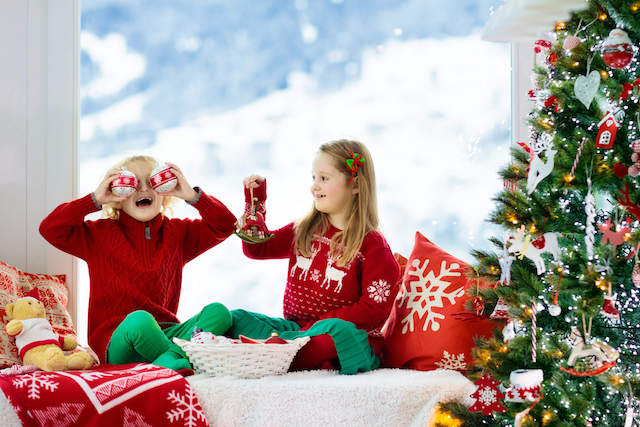
Wait, did you read that right? Yeap! Moldy Christmas trees are a real Grinchy threat to the holiday season.
And mold isn’t exactly the extra pizzazz we were hoping for when glitter bombing our homes with ornaments and the million and one other decoration options that exist nowadays. That’s why it’s important to know how this determined fungus can ride into your home on a Christmas tree sleigh, how to avoid it, and what signs to look out for in case your home is being bombarded by the Scrooge of the natural world.
How Do Christmas Trees Get Moldy?
We could open up a discussion between die-hard live tree fans and artificial aficionados, but the truth is that any Christmas tree that makes it inside of a house can have mold growth. What a way to bring us all together during this festive season!
How does this moldy situation occur? Well, it depends on the tree. But, before we get into that, let’s jump into a 30-second chat about mold so we can set the scene for how it hitched a ride into our homes.
All Things Moldy
Mold is a type of fungus that’s really only a fun(guy) in nature.¹ With over 100,000 species identified so far, this fungus exists pretty much everywhere and is Santa’s top elf in helping to decompose things in the natural world.² The important thing to focus on here is that all mold species reproduce by creating microscopic seeds called spores that they release into the air. The tricky thing about these seed-like spores is that they are invisible to the naked eye.
You probably encounter multiple of them throughout the day as you’re driving to pick up one of the new Starbucks holiday cups, humming Christmas tunes while walking into work, or precariously balancing on a ladder to hang up those twinkling lights we all love so much. A few spores here and there don’t cause a problem. Your immune system will descend on these foreign particles that dared to enter into your body and quickly and efficiently get rid of them.
When these particles find a nice home inside of your home, that’s when things get decidedly uncheerful. Once a spore finds a cozy spot, it will put down roots, claim the space as its own, and start releasing an army of spores into that indoor air.
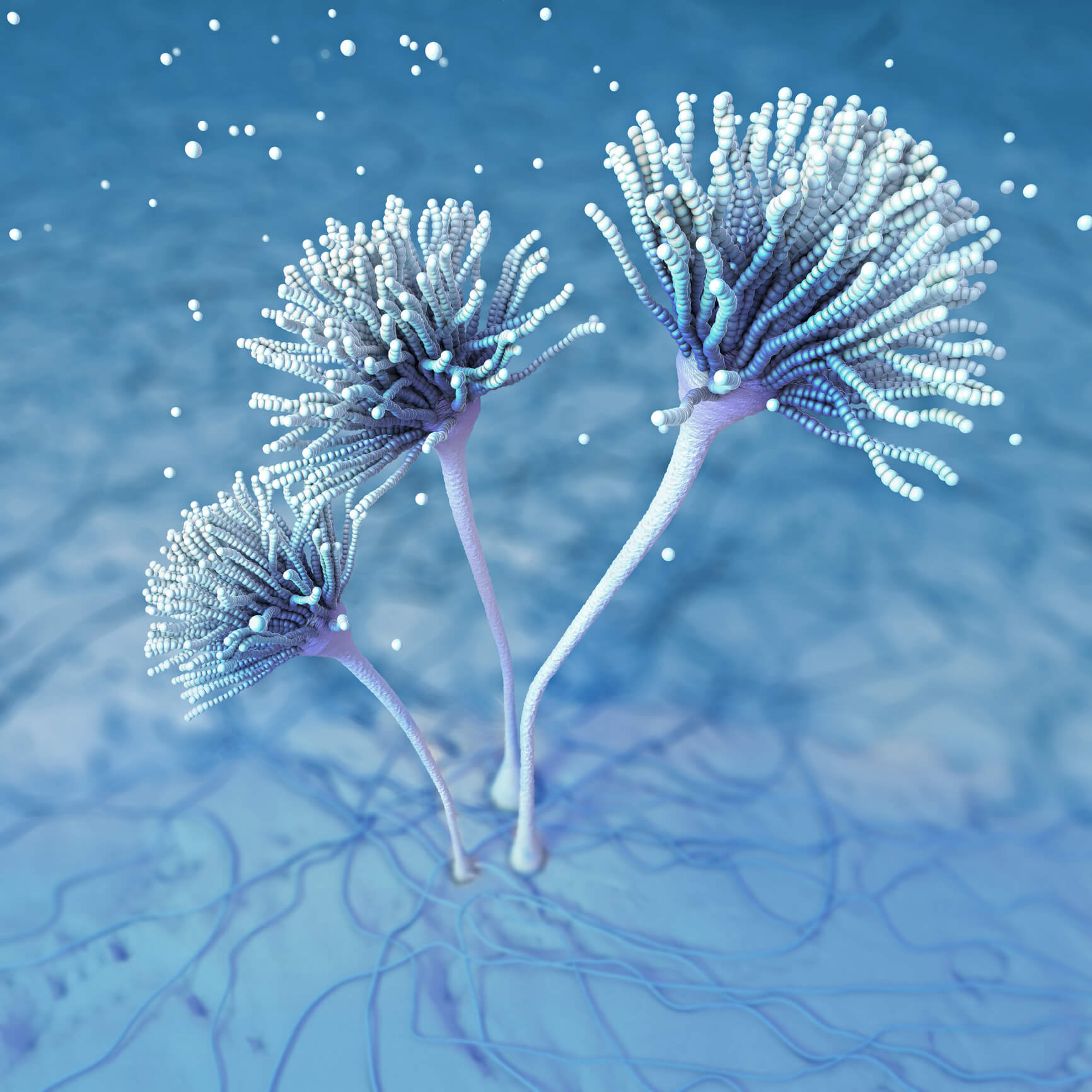
Now, instead of only encountering a few spores here and there, you’re living inside of a snow globe, except it’s not snow all around you, it’s mold spores. Some species of mold can also create microscopic toxins called mycotoxins, which they release right along with the mold spores.³
Dealing with exposure to all of these particles is a big task for our immune systems to handle, especially with the stress of the holiday season. They’ll do their best to fight them off, but it can lead to a long list of adverse health reactions as the exposure continues.⁵’⁶’⁷’⁸ Like snowflakes, everyone will be affected differently. Some people in the home may have no symptoms, some may have a runny nose, and others may develop neurological issues.
Researchers are still trying to figure out exactly how mold exposure affects us, but there are a lot of moving parts. Things like genetics, pre-existing conditions, volume of exposure, and species present all play a role. What we do know is that individuals with compromised immune systems and developing immune systems are at greater risk for developing symptoms.
The chance of a reaction is enough to pump the breaks on allowing this fungus to live in our homes.
The Lowdown on Moldy Christmas Trees
Some researchers noticed a correlation between these symptoms in individuals around the holiday season and started scratching their heads as to what in the mistletoe was going on. What they found was a whole lot of moldy Christmas trees as the culprit.⁹’¹⁰
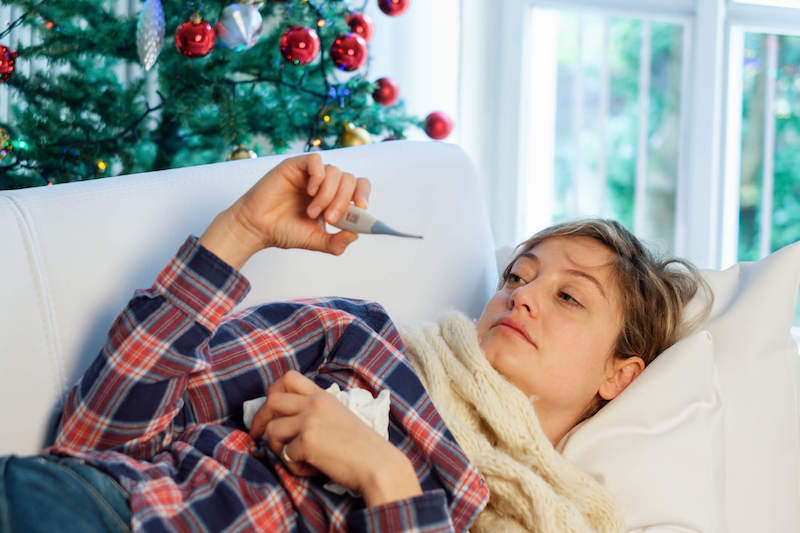
After a few studies, they deemed this situation the Christmas Tree Syndrome. In one study, they found that when live trees were brought inside, the mold spore count in that indoor air increased as much as five times the normal level. That’s a pretty drastic difference and is what they believed caused the spike in symptoms for those living inside.
On top of the symptoms this situation can trigger, a large number of spores in the air also increases the chances that one of them will stumble on a nice location inside the house and start to grow. A moldy situation is not the present we were all secretly hoping for this year.
That’s why moldy Christmas trees will not be making it onto our holiday guest list this year! To avoid this situation, we’ve got to know how they got moldy in the first place. To add to the debate, it depends on the tree.
Moldy Christmas Trees, Part One: It's A Live One
So, the bad news is that living trees are primed for moldy issues. It’s kind of like hearing that Santa isn’t real, right?
Unfortunately, it’s true for a few reasons. The biggest one is that they live in nature right alongside mold! All of those spores are just swirling around, living their best life, and they happen to be stickier than that double-sided tape we all fight with every year. Large Christmas trees with lots of crevices and needles offer fantastic opportunities for mold spores to chill out and take a load off.
When you pick out the perfect tree and bring it inside, these spores think they’ve found the absolute lottery dream home jackpot. First of all, they’ll probably get knocked off on the way inside and start floating around the home, which instantly adds negativity to the whole Christmasy-vibe we’re looking to create. Secondly, a temperature-controlled environment filled with oxygen and plenty of food sources is an oasis for mold spores. All they need is a little bit of moisture and poof. They’ll enter the land of the living and start to grow, colonize, and create more spores.¹¹
This moisture can come in a variety of ways, like watering the Christmas tree; it gives life to the tree and the mold spores living on it! Humidity is also a problem here.
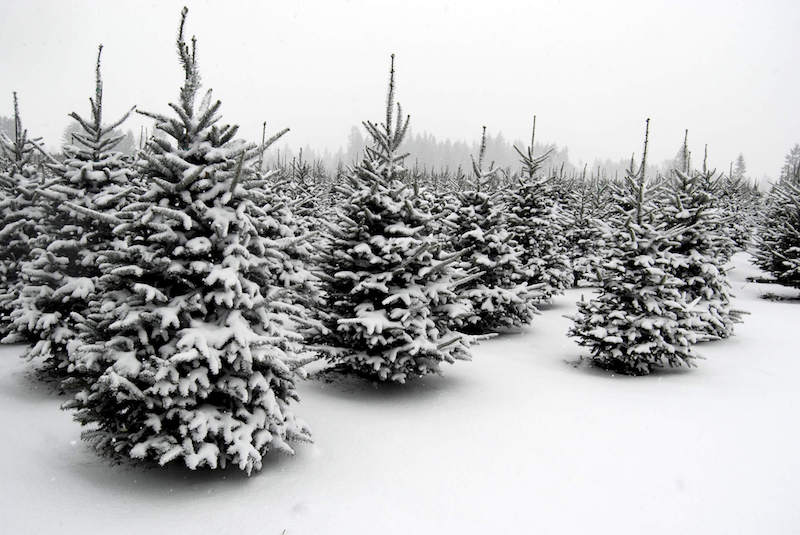
Many of us love blasting the heat, cooking our favorite holiday dish, or taking a hot shower to warm up from the chilly temperatures outside. All of that adds serious moisture to the air if we’re not working towards removing it, and gives the tiny spores the zest they need to start growing.
Packing and shipping can also provide a lot of wet opportunities for mold spores to start growing on the trees before they even make it through the front doors.
And we can’t forget that while these trees can last for some time, they were cut down and are technically no longer alive and well. Plus, they’re softwood trees and packed full of moisture, so like those foodstuffs in the back of the fridge that we forget about until it empties and there’s an unidentifiable fuzzy object in the back, these beacons of festivities can similarly get moldy.
The long and short of it is that there are plenty of opportunities for live trees to introduce mold spores into an indoor environment in a variety of ways and that is a no-no for holiday cheer.
These spores also get all over the rest of the decorations, especially the ornaments, and will travel with them back into storage, which is often ripe with moldy opportunities.
Moldy Christmas Trees, Part Two: Artificial Extravaganza
Artificial tree owners, you too are not exempt from moldy Christmas tree problems! I'm really starting to feel like the Scrooge of Christmas here... But it’s important to know so that our indoor air quality remains clean and safe!
The thing with artificial Christmas trees is that they’re out of sight, out of mind for a majority of the year. Depending on where they’re kept, this can be a fantastic treat for mold spores.
This fungus is tenacious. Given the right conditions, it won’t hesitate to start colonizing; conditions such as a leaky attic or humid crawlspace, dust and cardboard boxes, and uninterrupted alone time. Before you know it, it’s time to pull out the decoration boxes, and bam, you find mold.
That’s if you discover the growth at all. Mold could be growing in other dark corners of the attic. Either way, there are now countless spores all over the Christmas tree and decorations that weren’t stored in an airtight box. You might even be dealing with a moldy Christmas tree with colonized growth.
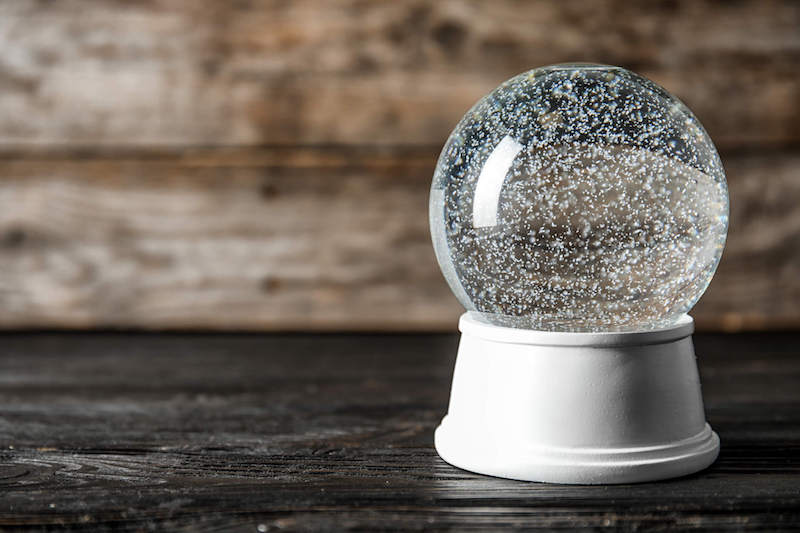
When these are brought back into the home, all of those spores are now swirling around that indoor space. Picture the snow globe again and you get an idea.
Speaking of snow globes, how we build homes now doesn’t help with the moldy Christmas tree debacle. They’re actually built similarly to snow globes by attempting to make them as airtight as possible so that they’re energy-efficient. That’s great for saving energy, but not so great for trapping air inside buildings. Instead of a nice airflow that helps remove some of those spores from that indoor environment, they remain trapped there like the pounds of glitter that Christmas decor sheds. Stagnant air is not the holiday trend we were looking for this year, but here we are.
Hence, the reason why we have to work to actively reduce opportunities for a mold spore party to exist in our homes in the first place.
Preventing Moldy Christmas Trees To Maintain That Holiday Spirit
By now, we can all agree that moldy Christmas trees are a holiday nightmare that we need to avoid at all costs! The good news is that there are steps we can take to minimize mold spores on our favorite Christmas decor items. Or items for those who go the extra mile and have multiple trees.
When it comes to which type of tree you should pick, real trees aren’t the safest option. Honestly, it’s best not to bring these amazing scented trees inside. That being said, if you’re completely dedicated to keeping the live tree tradition alive, you can take a few steps to minimize the potential for bringing mold spores into your home as much as possible.
These steps include:
- Use a leaf blower on the tree to get rid of as many unwanted particles as possible.
- Grab the hose and wash it with an EPA-approved disinfectant like a vinegar solution or Benefect Decon 30.
- Let it dry completely before bringing it inside.
- Keep an air purifier nearby to get rid of any spores (make sure it’s equipped with technology that can actually filter out spores!).
- Only keep it for a few days (a week max).
- Go with a self-cut tree so you know it wasn’t stored and shipped.
- Maintain indoor humidity between 30-50 percent. ¹²
Again, this isn’t a foolproof method for eliminating spores, but it will help to decrease the amount that makes it into your home.
For artificial trees, mold prevention steps include:
- Store it in an airtight container or bag (not cardboard!).
- Keep it in a temperature-controlled environment (not the attic or crawlspace).
- Take it outside and blow it off to get rid of any dust or random spores before and after storing it.
- Throw a desiccator in the storage containers (like silica gel).
Another aspect to consider in mold prevention is other decorations, especially ornaments! Cross-contamination is something we definitely want to avoid. If you opt for a real tree, go with Christmas decorations that are non-porous so you can give them a good wipe down with an EPA-approved cleaning product before storing them. Speaking of storing, put them in airtight containers like an artificial tree, and keep them in an area with as few wet opportunities as possible.
Found Mold? This Fungus Deserves Coal!
Sometimes a mold spore just lucks out, finds the right living conditions, and starts to grow even after you do all you can to prevent it. Unfortunately, sometimes that results in a moldy Christmas tree. In instances like these, just take a deep breath (outside, though, so you don’t inhale a ton of spores) and take action asap!
First things first: get rid of the tree. It’s a tragedy, but it’s better to be safe than sorry when it comes to mold exposure. Attempting to decontaminate a tree could leave behind mold spores or mycotoxins, and that is definitely what we do NOT want in your home.
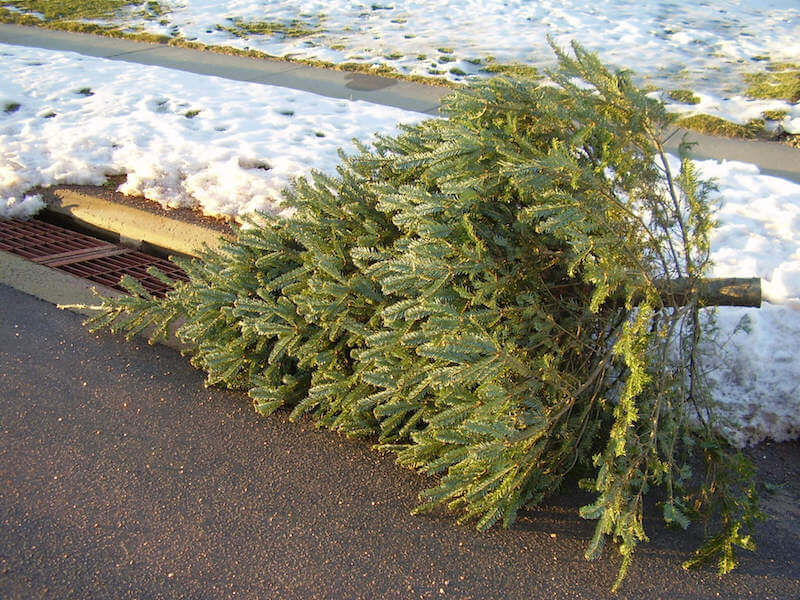
After that, it’s best to toss the ornaments as well and start over. For the ones you absolutely refuse to part with, clean them off with an EPA-approved cleaning product three times and use a microfiber towel to wipe them off. These awesome towels are 100 times better than regular ones at removing tiny particles like mold spores. The goal here is to remove as many particles as possible so that they don’t cross-contaminate to the next tree or get on any other items in the home.
From there, you’ll need to deep clean the house, especially the room where the tree was. The colonized mold was pumping spores (and potentially toxins) the entire time it was growing, so these will need to be removed quickly and properly. You’ll need a HEPA vacuum cleaner, an EPA-approved cleaning product, and microfiber towels. An air purifier is also a great tool to remove any spores that are floating in the air.
Make sure to complete this cleaning extravaganza a couple of times just to make sure that your home is free from as many mold spores and toxins as possible!
Maintaining A Jolly Holiday Season

Moldy Christmas trees are snow laughing matter! (You’ve got to love a good holiday pun)
All jokes aside, though, the last thing you want to deal with is feeling unwell during the holiday season and a big mold problem. Increasing our mold awareness is crucial to helping maintain clean, safe indoor air quality so that you and your family can remain healthy during this festive time of year.
Taking preventative action now can help ensure no mold spores manage to sneak in and ruin your holiday fun. So, before you decorate your home, make sure that your Christmas tree is in tip-top shape.
Can I get a watt watt for Christmases free from mold growth!
Had to sneak in one more...
Citations:
- Environmental Protection Agency. (n.d.). Mold. EPA. Retrieved from https://www.epa.gov/mold.
- Centers for Disease Control and Prevention. (2020, August 11). Basic facts about mold and dampness. Centers for Disease Control and Prevention. Retrieved from https://www.cdc.gov/mold/faqs.htm.
- World Health Organization. (n.d.). Mycotoxins. World Health Organization. Retrieved November 18, 2021, from https://www.who.int/news-room/fact-sheets/detail/mycotoxins.
- Environmental and Occupational Health Assessment Program, & Environmental and Occupational Health Assessment Program, & Health Science Section, Mold Basics for Primary Care Clinicians (2009). Hartford, CT; Connecticut Department of Public Health. , H. S. S., Mold Basics for Primary Care Clinicians 1–10 (2009). Hartford, CT; Connecticut Department of Public Health.
- Curtis, L., Lieberman, A., Stark, M., Rea, W., & Vetter, M. (2004). Adverse health effects of indoor molds. Journal of Nutritional & Environmental Medicine, 14(3), 261-274.
- Bush, R. K., Portnoy, J. M., Saxon, A., Terr, A. I., & Wood, R. A. (2006). The medical effects of mold exposure. Journal of Allergy and Clinical Immunology, 117(2), 326-333
- Fisk, W. J., Lei-Gomez, Q., & Mendell, M. J. (2007). Meta-analyses of the associations of respiratory health effects with dampness and mold in homes. Indoor air, 17(4), 284-296.
- Kurlandsky, L. E., Przepiora, J., Riddell, S. W., & Kiska, D. L. (2011). Identification of mold on seasonal indoor coniferous trees. Annals of Allergy, Asthma & Immunology, 106(6), 543-544.
- Rosenberg-Douglas, K. (2019, December 9). Sneezing too much to enjoy the holidays? A moldy Christmas tree might be to blame, but there are ways to breathe easy. chicagotribune.com. Retrieved November 26, 2021, from https://www.chicagotribune.com/news/breaking/ct-mold-christmas-tree-dangers-20191206-njkz7fxzibavlnsjqceq62nq4i-story.html.
- Lstiburek, J., Brennan, T., & Yost, N. (2002, January 15). Rr-0208: What you need to know about mold. Building Science Corporation. Retrieved November 18, from https://www.buildingscience.com/documents/reports/rr-0208-what-you-need-to-know-about-mold/view.
- EPA. (n.d.). A Brief Guide to Mold, Moisture, and Your Home. EPA. Retrieved from https://www.epa.gov/mold/brief-guide-mold-moisture-and-your-home#tab-6.
